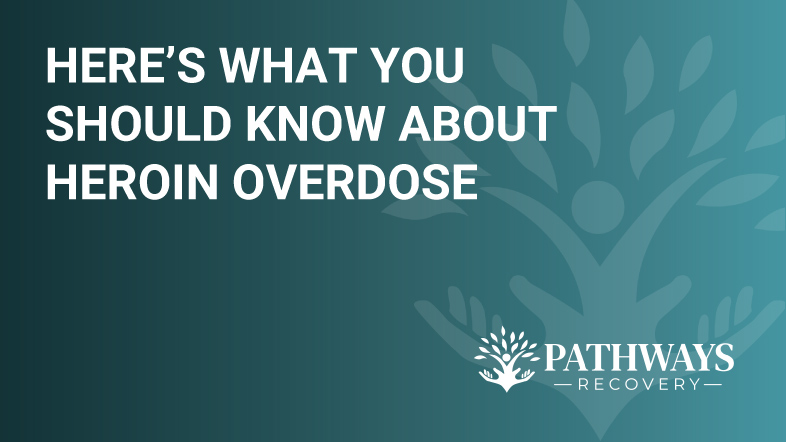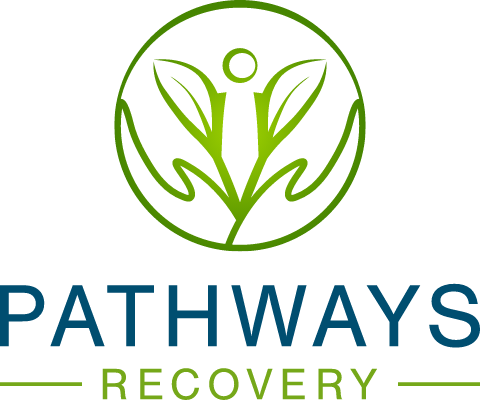If someone is showing signs of a heroin overdose, call 911 immediately.
For more than 20 years, the opioid epidemic has wreaked havoc across the United States. California is no stranger to the issue.
In 2020, there were 16,537 emergency department visits related to opioid overdose, according to the California Overdose Surveillance Dashboard. There were also 5,502 deaths related to opioid overdose.
One drug in particular, heroin, continues to make headlines. You’ve probably heard a story or two about just how dangerous this drug is. On top of being addictive, it poses the risk of overdose, which is a medical emergency.
If you or someone you know has overdosed, call 911 immediately.
A Look at Heroin
According to the National Institutes of Health (NIH), “Heroin is an opioid drug made from morphine, a natural substance taken from the seed pod of the various opium poppy plants grown in Southeast and Southwest Asia, Mexico, and Colombia. Heroin can be a white or brown powder, or a black sticky substance known as black tar heroin.”
Heroin is typically injected, snorted, or smoked. It’s also often mixed with other drugs, most notably crack cocaine in a combination that’s referred to as a speedball. Sometimes, people who got addicted to prescription opioids turn to heroin when they can’t get a prescription or when it’s cheaper.
In 2018, there were 778 deaths involving heroin in the state of California. Even one is far too many, so there’s still much work to be done.
The NIH also explains, ”Heroin enters the brain rapidly and binds to opioid receptors on cells located in many areas, especially those involved in feelings of pain and pleasure and in controlling heart rate, sleeping, and breathing.”
These are just a few of the reasons why heroin can be so addictive and appealing to people. Not only does it act quickly, but it provides a sense of euphoria (pleasure) once it enters the system, not to mention pain relief.
In the short-term, heroin can cause:
- Warm flushing of the skin
- Nausea and vomiting
- Severe itchiness
- Dry mouth
- Problems thinking
- Falling in and out of consciousness (being awake)
Long-term effects include:
- Collapsed veins from injecting
- Insomnia (not being able to fall or stay asleep)
- Damaged nose tissue from snorting
- Constipation
- Stomach cramping
- Liver disease
- Kidney disease
- Mental health disorders
- Lung problems from smoking
- Infection of heart lining and valves
As mentioned earlier, overdose is a serious side effect related to heroin use. There are specific signs to look out for in case you or someone you know has taken too much.
Identifying Heroin Overdose
Spotting heroin overdose in a timely manner is crucial. The fact is that heroin and opioid overdoses in general have a variety of symptoms.
According to the U.S. National Library of Medicine (NLM), “Most people who overdose are already addicted, but some people overdose the very first time they try it. Many people who use heroin also abuse prescription pain medicines and other drugs. They may also abuse alcohol. These combinations of substances can be very dangerous. Heroin use in the United States has been growing since 2007.”
Signs of heroin overdose include:
- No breathing
- Shallow breathing
- Slow or difficult breathing
- Dry mouth
- Extremely small pupils (the black centers of the eyes)
- Low blood pressure
- Discolored tongue
- Bluish-colored nails and/or lips
- Weak pulse
- Spasms
- Constipation
- Sleepiness
- Uncontrolled muscle movements
- Confusion
- Coma
Emergency personnel may respond to a heroin overdose in a few different ways. The NLM says, “The provider will measure and monitor the person’s vital signs, including temperature, pulse, breathing rate, and blood pressure. Symptoms will be treated. The person may receive:
- Blood and urine tests
- Breathing support, including oxygen tube through the mouth into the throat, and breathing machine
- Chest x-ray
- CT scan (advanced imaging) of the brain if head injury is suspected
- ECG (electrocardiogram, or heart tracing)
- Intravenous fluids (IV, through a vein)
- Medicines to treat symptoms, such as naloxone, to counteract the effects of the heroin
- Multiple doses or continuous IV administration of naloxone. This may be needed because naloxone’s effects are short-lived, and the depressive effects of the heroin are long-lasting.”
It cannot be stressed enough, contact emergency personnel as soon as possible if someone is showing any signs of a heroin overdose.
You Are More Than Your Addiction
“I can’t change the direction of the wind, but I can adjust my sails to always reach my destination.”
— Jimmy Dean
Life is about overcoming obstacles. Rising above negativity and imperfections makes us stronger. When it comes to heroin addiction, you have the opportunity to break free from its grasp.
There is no shame in asking for help. You deserve to live a life of fulfillment and purpose. Right now, it may not seem like it, but you do not need heroin to function. You do not need heroin to make yourself happy.
There is more to life than heroin, and you have the power to experience it all.
Conquer Your Heroin Addiction
Pathways Recovery provides three levels of heroin overdose treatment solutions for those battling heroin addiction, including a heroin detox center, residential treatment, and intensive outpatient treatment.
The facility is designed to provide the best possible experience for clients as they work toward recovery. Pathways Recovery’s master’s-level clinicians and staff will work tirelessly to make sure each client is safe and well taken care of.
The detox center provides medically assisted detoxification for those who need it. Our clients will be supported through this entire process with a qualified team available to provide supervision for safety and peace of mind.
After the detox process, clients will enter the residential program to begin the healing process. Pathways Recovery treatment programs are tailored to the unique needs of each client.
Therapy sessions are designed to get to the root cause of addiction, psychiatry is used to focus on undiagnosed mental health disorders, and medication-assisted treatment is available if the client needs it.
The third and final part of the process is intensive outpatient treatment, which is perfect for clients transitioning from their residential stay. With three weekly group sessions available, clients can remain connected to the recovery process.
Pathways Recovery, located in Roseville, California, near Sacramento, can give you the treatment you need. If you need heroin rehab, we’re here for you. To learn more, call (916) 735-8377.
Frequently Asked Questions
How long does Narcan stay in your system?
According to the National Institutes of Health, “Naloxone (Narcan) works to reverse opioid overdose in the body for only 30 to 90 minutes. But many opioids remain in the body longer than that. Because of this, it is possible for a person to still experience the effects of an overdose after a dose of naloxone wears off. Also, some opioids are stronger and might require multiple doses of naloxone. Therefore, one of the most important steps to take is to call 911 so the individual can receive immediate medical attention.”
When do you administer Narcan?
Narcan is administered in the event of an opioid overdose. You should look for signs of an opioid overdose, which are mentioned in this blog. This also does not mean you shouldn’t contact emergency personnel. You should always call 911 if an overdose is suspected.


